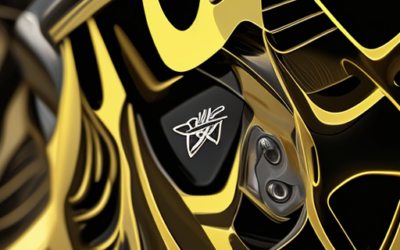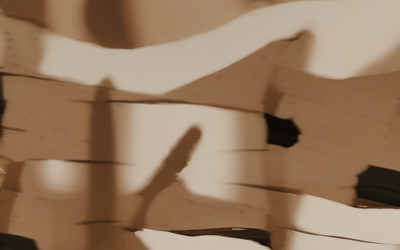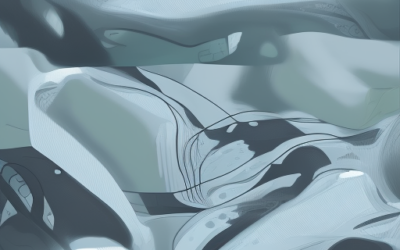Retro Rides: Exploring the World of Vintage Wheels

1. Introduction to vintage cars
Vintage cars, also known as classic cars or retro rides, are vehicles that were produced between the early 1900s and the late 1980s. These cars have a unique charm and appeal that has made them popular among car enthusiasts and collectors alike. Whether it’s the sleek design, powerful engines, or the memories they evoke, vintage cars have a special place in automotive history. In this article, we will explore the world of vintage cars, including their appeal, different types, and the history behind them.

2. The appeal of retro rides
Retro rides have a timeless charm that captures the hearts of many enthusiasts. These classic cars evoke nostalgia and transport us back in time, reminding us of a simpler era when life moved at a slower pace. They embody the spirit of adventure and freedom, inviting us to hit the open road and explore new horizons. For some, it’s the thrill of driving a piece of automotive history, while others appreciate the craftsmanship and attention to detail that went into their creation. Whatever the reason, retro rides continue to captivate and inspire generations of car lovers worldwide.

3. Types of vintage cars
a. Classic American muscle cars
i. Ford Mustang
ii. Chevrolet Camaro
iii. Pontiac GTO
iv. Dodge Charger
v. Plymouth Barracuda
b. European sports cars
i. Ferrari
ii. Porsche
iii. Maserati
iv. Lamborghini
v. Alfa Romeo
c. Japanese performance vehicles
i. Toyota Supra
ii. Nissan Skyline
iii. Mazda RX-7
iv. Honda NSX
v. Subaru Impreza WRX
d. British luxury cars
i. Jaguar E-Type
ii. Aston Martin DB5
iii. Bentley Continental GT
iv. Rolls-Royce Phantom
v. MG TF

4. The history of vintage cars
Vintage cars have a rich and fascinating history that spans several decades. From the early days of automobile production to the present, these classic vehicles have captured the hearts of many enthusiasts around the world. In this section, we’ll explore the evolution of vintage cars and how they have become an integral part of our automotive culture.
The earliest vintage cars were produced in the late 1800s and early 1900s. These early models were often referred to as “horseless carriages” and were powered by gasoline engines. As technology advanced, so did the design and engineering of vintage cars. During the 1920s and 1930s, luxury brands like Rolls-Royce and Bentley emerged, offering opulent vehicles with sleek designs and impressive performance capabilities.
In the post-World War II era, American automakers began producing iconic models such as the Ford Mustang, Chevrolet Corvette, and Pontiac GTO. These cars became synonymous with youth culture and the spirit of rebellion. Meanwhile, European manufacturers continued to produce high-performance sports cars that pushed the boundaries of speed and handling.
As time passed, vintage cars evolved into a subculture, with dedicated enthusiasts and clubs forming around specific makes and models. Restoration projects became increasingly popular, as collectors sought to preserve these pieces of automotive history. Today, vintage car events and shows draw large crowds, showcasing the beauty and ingenuity of classic vehicles from yesteryear.

5. Restoration process for vintage cars
Restoring a vintage car can be a labor of love, a way to preserve history, or simply a passion project. Whatever the reason, the restoration process involves a lot of hard work, dedication, and attention to detail. Here’s what you need to know about restoring a vintage car:
1. Preparation: Before starting any restoration project, it’s important to have a clear plan in place. This includes setting a budget, sourcing parts, and identifying any challenges that may arise during the process.
2. Stripping: The first step in the restoration process is to strip the car down to its bare essentials. This involves removing all the interior and exterior components, such as the seats, doors, bumpers, and paint.
3. Cleaning and sanding: Once the car has been stripped, it’s time to clean and sand down the metal surfaces. This helps to remove any rust or corrosion and prepares the surface for painting.
4. Priming and painting: After the metal surfaces have been cleaned and prepared, they are primed and then painted using a high-quality paint that matches the original color of the car.
5. Assembly: With the bodywork complete, it’s time to start putting the car back together. This involves installing new parts, such as the engine, transmission, and suspension, as well as reinstalling the interior and exterior components.
6. Testing and tuning: Once the car has been fully assembled, it’s important to test it thoroughly to ensure that everything is working correctly. This includes checking the engine, transmission, brakes, and steering, as well as fine-tuning the suspension and other mechanical systems.
7. Final touches: Finally, the last steps in the restoration process involve adding the finishing touches, such as new upholstery, trim, and accessories. These details can really bring a vintage car back to life and give it a polished, professional look.

6. Popular vintage car events and gatherings
Vintage car enthusiasts around the world come together at various events and gatherings to celebrate their love for classic automobiles. These events provide an opportunity for owners and fans alike to showcase their beloved rides, connect with like-minded individuals, and experience the thrill of vintage car culture. Some of the most popular vintage car events and gatherings include:
1. The Concours d’Elegance: This prestigious event features a judged competition for vintage cars, with awards given for the best examples in various categories.
2. The Vintage Race Weekend: For those who enjoy watching classic cars race, this event offers a chance to see vintage vehicles compete on the track.
3. The Classic Car Show: These shows often feature vintage cars on display, along with vendors selling related items and memorabilia.
4. The Vintage Car Parade: Cities around the world host parades featuring vintage cars, which provide an opportunity for participants to show off their vehicles while enjoying a festive atmosphere.
5. The Vintage Car Rally: Similar to a parade, a rally involves driving vintage cars through scenic routes, with participants competing against each other based on various criteria.
6. The Vintage Car Festival: These festivals typically take place over several days and offer a variety of activities, including car shows, races, and cruises.
7. The Vintage Car Meetup: Local meetups provide a casual setting for vintage car enthusiasts to get together, share their knowledge, and admire each other’s vehicles.

7. Vintage car collecting as a hobby
Vintage car collecting has become increasingly popular in recent years, with many people finding joy in preserving and restoring classic automobiles. Whether it’s the thrill of the hunt or the satisfaction of owning a piece of automotive history, vintage car collecting offers a unique experience that appeals to enthusiasts of all ages.
From classic American muscle cars to European sports cars, Japanese performance vehicles to British luxury cars, there is something for everyone in the world of vintage rides. Each type of car has its own distinct style, character, and appeal, making it a fascinating area of study and appreciation.
Restoring a vintage car can be a challenging yet rewarding process, requiring patience, skill, and a deep understanding of automotive mechanics. It’s not just about putting a car back together; it’s about uncovering its original beauty and bringing it back to life. The sense of accomplishment that comes from completing a restoration project is hard to match.
For those who enjoy socializing and networking with like-minded individuals, there are numerous vintage car events and gatherings held throughout the year. These events provide opportunities to showcase restored vehicles, connect with fellow collectors, and share knowledge and experiences. From concours d’elegance to cruise nights, there is always a reason to celebrate the beauty and history of vintage cars.
In addition to the personal fulfillment gained from collecting and restoring vintage cars, it has also become a lucrative hobby for some. With the rise of vintage car auctions and the demand for rare and unique automobiles, collectors have seen significant financial gains from their investments. However, it’s important to remember that vintage car collecting should be approached as a passion first and foremost, rather than solely as a means to make a profit.

8. The rise of vintage car auctions
The rise of vintage car auctions has been a significant trend in recent years. These auctions offer enthusiasts the opportunity to own a piece of automotive history while providing a platform for sellers to showcase their prized possessions. Some of the most popular vintage car auction houses include Bonhams, Gooding & Company, and RM Sotheby’s. These auctions often feature rare and unique examples of classic cars, attracting bidders from all over the world. With the increasing value of vintage vehicles, many collectors now see investment potential in these classic gems, leading to fierce competition during the auction process. The rise of vintage car auctions has not only fueled the passion for classic cars but has also become a major contributor to the preservation and restoration of these historic vehicles.

9. Insurance considerations for vintage cars
When it comes to owning a vintage car, insurance can be a significant consideration. Unlike modern vehicles, vintage cars often require specialized coverage due to their unique nature and value. Here are some factors to keep in mind when obtaining insurance for your vintage ride:
1. Value: One of the most important aspects of insuring a vintage car is determining its value. These vehicles can range from a few thousand dollars to millions of dollars, depending on their age, condition, and rarity. It’s essential to have an accurate appraisal or evaluation of your vehicle to ensure you have adequate coverage.
2. Usage: Another crucial factor to consider is how you plan to use your vintage car. Will it be primarily used for show and display, or will it be driven regularly? Different insurance providers may have different policies for usage, so it’s important to choose one that aligns with your intended use.
3. Modifications: If your vintage car has undergone any modifications, these may affect your insurance coverage. Some insurers may view modified vehicles as higher risk, which could result in higher premiums or even denial of coverage. Be sure to disclose any modifications to your insurer and discuss potential implications.
4. Storage: Where you store your vintage car can also impact your insurance coverage. If your vehicle is kept in a secure garage, you may qualify for lower rates compared to those who store their cars outside or in less secure locations.
5. Liability: Like standard auto insurance, liability coverage is essential for vintage cars. This will protect you if you cause damage or injury to another party while driving your vehicle.
6. Gap Coverage: Given the high value of many vintage cars, gap coverage may be necessary. This type of insurance covers the difference between the vehicle’s value and the amount paid out in the event of a total loss.
7. Event Participation: If you plan to participate in vintage car events or shows, you may need additional coverage. Some insurance providers offer special event coverage that provides temporary increased limits on liability and comprehensive coverage for a specific period.
In summary, insuring a vintage car requires careful consideration of several factors. By understanding the unique needs of your vehicle and working with an experienced insurance professional, you can find the right coverage to protect your investment and enjoy your classic ride with peace of mind.

10. Conclusion
In conclusion, vintage cars have always held a special place in the hearts of car enthusiasts worldwide. These classic beauties not only capture the essence of a bygone era but also offer a unique driving experience unlike any other. Whether you’re a seasoned collector or simply appreciate the allure of retro rides, there’s no denying the charm that these vehicles exude. As we continue to explore the world of vintage wheels, it’s clear that this passionate community will only grow stronger. So, if you’re ever tempted to take a step back in time and hit the open road in a classic car, don’t hesitate – embrace the adventure and let the good times roll!



